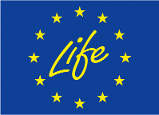Mitigation strategies applied to livestock
Today, there are countless possibilities to mitigate the impacts of a dairy farm, and they involve different aspects of the same production reality.
The optimization of the feed rations based on the close correspondence between animal needs and nutrient supply, for example, allows to increase productivity and minimize the excretion of organic matter; the improvement of herd management in terms of reproductive performance makes it possible to reduce the number of animals bred; the use of specific additives leads to a reduction in enteric methane emissions; the destination of livestock manure to anaerobic digestion plants reduces the release of pollutant gases into the atmosphere.
The farm phase contributes to about 91% of the environmental performance of the production chain of Grana Padano PDO cheese, so one of the objectives of the LIFE TTGG project was to identify, among the wide range of available mitigation strategies, those with the highest potential to reduce impacts.
The analyses carried out following the Product Environmental Footprint (PEF) methodology have provided an organic picture of the environmental impacts related to the farm phase, making possible to propose “sustainable intensification” actions that are actually achievable, taking into account the structural characteristics of each production reality and the socio-geographical context in which it is placed.
Applying this approach to a representative farm of the Grana Padano PDO chain, it was found that a better management efficiency of organic and synthetic fertilizers has the potential to reduce by 5.06% its environmental impact.
The proposed mitigation strategy was based on interventions such as: the implementation of a rigid cover for the storage of manure, the burial at a depth greater than 15 cm with closure of the furrow during the distribution of manure in the field, the injection into the soil of synthetic fertilizer and the use of slow-release urea. The implementation of these measures minimizes gaseous nitrogen losses in the form of ammonia and reduces indirect emissions of nitrous oxide and nitrogen oxides.
The mitigation strategies not only reduce impacts but also bring economic benefits. More accurate management of organic and synthetic fertilizers is accompanied by a potential increase in yields per hectare of self-produced crops, thus reducing the farm’s dependence on the market for feed and feedstuffs.
Source: Università Cattolica del Sacro Cuore

